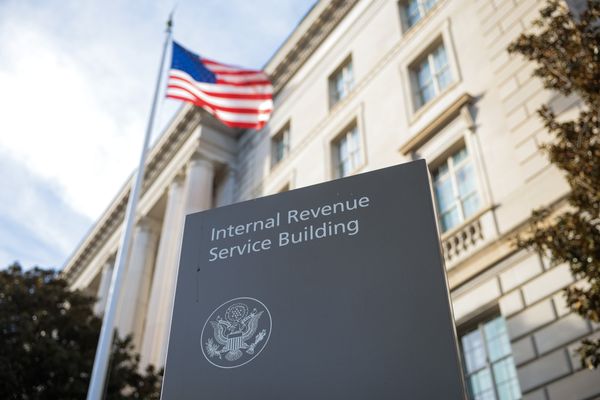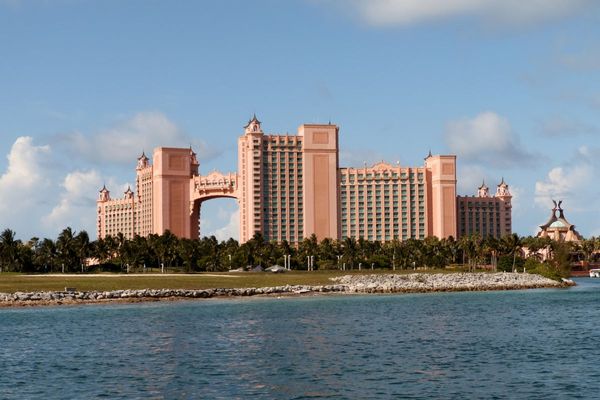
Before 2010, China was eons behind the U.S., Europe, and Japan in making competitive gas-powered cars. Chinese automakers largely relied on joint ventures with Western automakers and foreign direct investment to satisfy demand at home. Even then, Chinese cars were perceived as being lower quality than cars made in mature automotive markets. Local players even made clones of popular Western models and were ridiculed for the same.
But in the late 2000s, China's passenger vehicle market took off.
In the post-financial crisis era, when the Obama administration failed to realize its larger electric vehicle ambitions, China forged ahead with EVs, leaving most of the world in the dust. Chinese cars, especially EVs, are no longer doppelgangers of Western models. Models like the BYD Seal and Song now compete with top-tier Western rivals, and in several areas, even outperform them.
Get Fully Charged
China's meteoric rise to the top of the electric vehicle industry
A massive state initiative to push EVs has made China the world's largest electric vehicle market. To the envy of many other countries, Chinese EVs are cheap, good-looking, feature-packed, and no longer have the perceived quality issues that Chinese gas cars had before.
The transition wasn’t smooth or easy. It took over a decade for the Chinese auto industry to transform.
“Around 2009-2010 you see a big push to commercialize EVs in China. You start getting the first consumer subsidies, and the government enables a good business environment for EV makers,” Ilaria Mazzocco, Senior Fellow, Trustee Chair in Chinese business and economics at the Center for Strategic and International Studies, said during a virtual panel with reporters organized by Reuters.

Policies like the Inflation Reduction Act which the U.S. passed in 2022, were put in place in China over a decade earlier. “[Favorable] policies enabled local governments to support local companies and also figure out how to boost sales, with the electrification of taxi and bus fleets, for example,” she added.
Facilitating homegrown automakers’ access to credit, venture capital, and private equity funds, and a state-owned banking sector played a big role in pushing the Chinese auto industry towards EVs, Mazzocco said.
China already had a powerful manufacturing industry in electronics and textiles. Chinese leader Hu Jintao’s administration laid the foundation for the world’s largest EV market.
At the time, Japanese companies like Panasonic and Sanyo were the largest battery manufacturers. But China quickly caught up using cheap labor, comparatively lower environmental standards, and the “freewheeling capitalism of its entrepreneurs,” according to Henry Sanderson, the executive editor of Benchmark Mineral Intelligence.
BYD, which started as a battery maker for the electronics industry in the 1990s, as well as Contemporary Amperex Technology, or CATL, reaped huge benefits from the Chinese government incentives.
Last year, BYD surpassed Tesla as the world’s largest BEV maker. CATL overtook Japan’s Panasonic as the world’s largest battery manufacturer way back in 2017.
There was also a “whitelist” that prioritized local suppliers. It prevented foreign battery makers like Panasonic, LG Chem, and Samsung SDI from gaining Chinese subsidies as the country aimed to build out a self-sustaining battery industry. The “whitelist” was abolished in 2019. The Foreign Entity of Concern (FEOC) clause in the updated Inflation Reduction Act guidelines echoes China’s former “whitelist.” But it’s a decade late to the party.
This combination of political will, soaring demand, and subsidies gave rise to China’s clean energy billionaires. The list is long, but some prominent names include Robin Zeng, the chairperson of CATL, Wang Chuanfu, the CEO of BYD, and Li Shufu, the founder and chairman of Geely group, the company that owns brands like Volvo, Polestar, and Zeekr among others.
“If you look at the history of the clean energy billionaires, you know they were born in the Cultural Revolution. They all grew up in poverty, and at that time, China was behind Japan in batteries for consumer electronics,” Sanderson said.

Broadly speaking, it was this massive state push on the demand side with subsidies and the “entrepreneurial zeal” of these CEOs that pushed China’s EV industry. Today, over 80% of global lithium-ion battery production takes place in China. Over 8 million plug-in cars were sold in China last year, of which 5.34 million were BEVs, accounting for a 25% market share.
The U.S. EV market is growing as well. Over 1.4 million plug-in cars were sold in the U.S. in 2023, of which 1.1 million were all-electric. But when it comes to making truly affordable EVs, U.S. automakers have some work left to do.
When asked if the U.S. could manufacture cost-competitive lithium-ion batteries in the coming years, experts said it would be tough. “It's difficult to see how you can create an alternative supply chain and maintain the same costs. Because in part, you're trying to reinvent the wheel. And you're competing with the same battery chemistries,” Mazzocco said.
Two of the most popular EV battery chemistries, nickel-manganese-cobalt and lithium-iron-phosphate were invented in the U.S. The former is considered more energy-dense, allowing longer range. Meanwhile, LFP batteries aren’t as energy-dense as their NMC counterparts, but they typically have a longer life cycle, and pose fewer safety and environmental risks.
American materials scientist John Goodenough is credited with inventing the first LFP cathode—the negative electrode in a battery—at the University of Texas in the late 1990s, while some of the earliest NMC cathodes took shape at the federally funded Argonne National Laboratory in Illinois.

“The Chinese have come very far in commercializing these chemistries, and scaling up what was already invented,” Steve LeVine, the editor of The Electric, a biweekly newsletter published by The Information, said during the virtual panel.
“It's unrealistic for the U.S. to think that it can completely decouple from China and have a battery industry. There has to be a way to work with CATL, BYD, and the other Chinese companies to build up the U.S. industry,” LeVine said.
Last year, Ford and CATL joined hands to build an LFP gigafactory in Michigan. Ford estimated that the $3.5 billion plant would create 2,500 direct jobs. Its annual production capacity was estimated to be 35 gigawatt hours (GWh). But the automaker has since faced intense scrutiny from U.S. lawmakers over CATL’s alleged ties with the Chinese Communist Party, and links to alleged human rights abuses in the Xinjiang region.
The construction of the Ford-CATL plant is underway regardless. However, the Detroit automaker has scaled back the capacity of the new plant, partly due to the slower-than-expected demand for EVs over the past few months.
“Ford’s agreement to build an LFP factory in Michigan is not exactly a model because there does not appear to be a part of that deal in which Ford's workers learn how to make LFP batteries,” LeVine said. “There has to be a way that allows Chinese experts like CATL to come into the U.S., have joint ventures with American companies, and, train Americans on how to make LFP batteries.”

Meanwhile, Europe is welcoming Chinese battery makers with open arms. CATL is building an $8 billion facility in Hungary, its largest plant in Europe. Envision AESC will build factories in Spain and France. SVolt, a company spun out of a partnership between BMW and Great Wall Motor, is aiming to build five plants in Europe. Two of them will be in Germany. By the end of the decade, SVolt aims to reach a production capacity of 50 gigawatt-hours, enough to power a million EVs.
“Chinese companies are starting to go abroad and they're increasingly localizing production. They may be responding to concerns of the Chinese government's overreaching. So they're starting to invest outside of China to make sure that they don't they don't get in trouble or get affected by export controls,” Mazzocco said.
They are also entering the Global South. Gotion High-Tech is establishing Africa’s first EV battery plant in Morocco. BYD is building a $290 million cathode factory in Chile. The South American nation has the world’s largest lithium deposits and is the second-largest raw lithium producer behind Australia. Some estimates suggest Chile’s lithium accounted for about 24% of global lithium production in 2023.
“[Chinese battery companies] are also responding to incentives that other governments have in place. With the IRA, you're seeing a lot of investment in countries with which the U.S. has free trade agreements with, like Morocco and Chile. Batteries made in these countries qualify for the IRA subsidies,” Mazzocco added.

Keeping U.S. automakers on their toes is the possibility of Mexico serving as a backdoor for Chinese EVs to enter the U.S.
BYD confirmed to Nikkei Asia last month that it was considering building a plant in Mexico to potentially establish an export hub to the U.S. Thanks to the U.S.-Mexico-Canada trade agreement (USMCA), cars made in Mexico would be subject to tariff-free exports to the U.S. But the narrative that Chinese EVs made in Mexico will only head to the U.S. is solipsistic and misguided, experts indicate.
“If we look at Mexico, Central America, and South America, that's where [Chinese companies] can also grow their businesses and sales. So it's not just we're going to enter Mexico to only go into North America,” Tu Le, the managing director of market research and management consulting firm Sino Auto Insights, told InsideEVs. “They see per capita incomes increasing in Latin America and South America as well.”
While the U.S. is certainly no match to China, its EV footprint is expanding thanks to the Inflation Reduction Act. The IRA has spurred domestic battery production with billions of dollars in manufacturing and consumer subsidies. But as the 2024 presidential election looms large, the IRA’s future is in question.
Republican frontrunner Donald Trump has attacked the IRA provisions on the campaign trail. He thinks tax credits are for “rich people” to buy “luxury electric cars.”
It’s uncertain whether the IRA will even survive. If it does, it may change substantially. But experts agree that history cannot repeat itself, especially when cutting China off the supply chain is so hard. “The last time we went through this, around 2009 through 2012 to 2013, we stopped. And the Chinese kept going. You see the result of that,” LeVine said.
“It would be a huge mistake, like a monumental, colossal, geopolitical, and economic error to do the same thing again. We need to keep this policy going through the whole decade,” he added.







